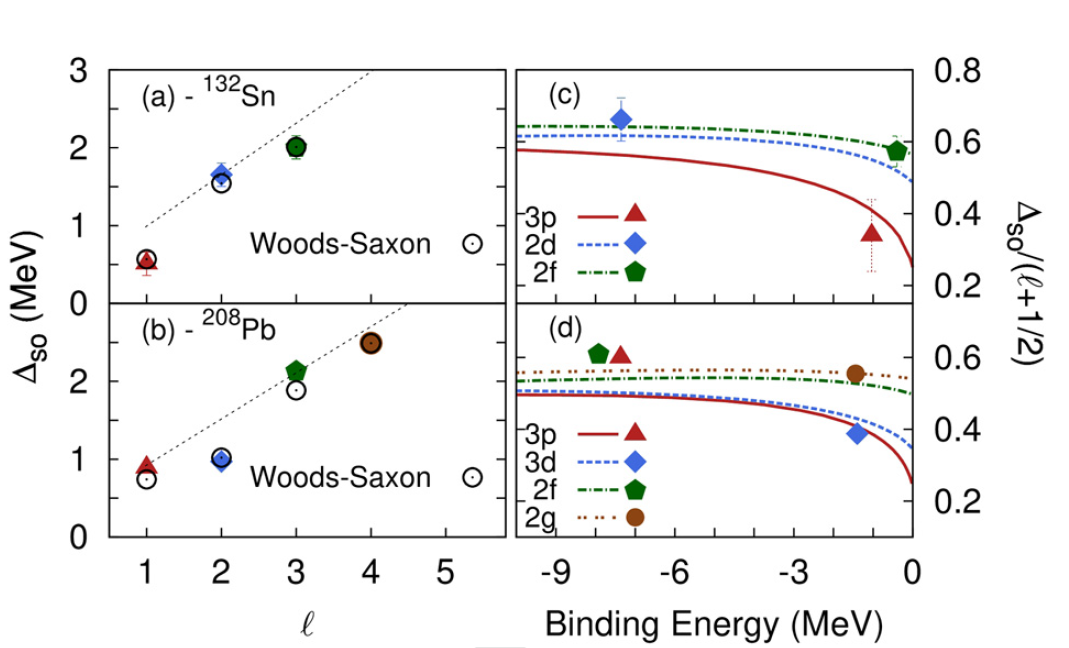
Neutron-hole states in 131Sn and spin-orbit splitting in neutron-rich nuclei
R. Orlandi, S.D. Pain, et al., Phys. Lett. B 785, 615
In atomic nuclei, the spin-orbit interaction originates from the coupling of the orbital motion of a nucleon with its intrinsic spin. Recent experimental and theoretical works have suggested a weakening of the spin-orbit interaction in neutron-rich nuclei far from stability. To study this phenomenon, we have investigated the spin-orbit energy splittings of single-hole and single-particle valence neutron orbits of 132Sn. The spectroscopic strength of single-hole states in 131Sn was determined from the measured differential cross sections of the tritons from the neutron-removing 132Sn(d, t)131Sn reaction, which was studied in inverse kinematics at the Holifield Radioactive Ion Beam Facility at Oak Ridge National Laboratory. The spectroscopic factors of the lowest 3/2+, 1/2+ and 5/2+ states were found to be consistent with their maximal values of (2j+1), confirming the robust N=82 shell closure at 132Sn. We compared the spin-orbit splitting of neutron single-hole states in 131Sn to those of single-particle states in 133Sn determined in a recent measurement of the 132Sn(d, p)133Sn reaction. We found a significant reduction of the energy splitting of the weakly bound 3p orbits compared to the well-bound 2d orbits, and that all the observed energy splittings can be reproduced remarkably well by calculations using a one-body spin-orbit interaction and a Woods–Saxon potential of standard radius and diffuseness. The observed reduction of spin-orbit splitting can be explained by the extended radial wavefunctions of the weakly bound orbits, without invoking a weakening of the spin-orbit strength.


